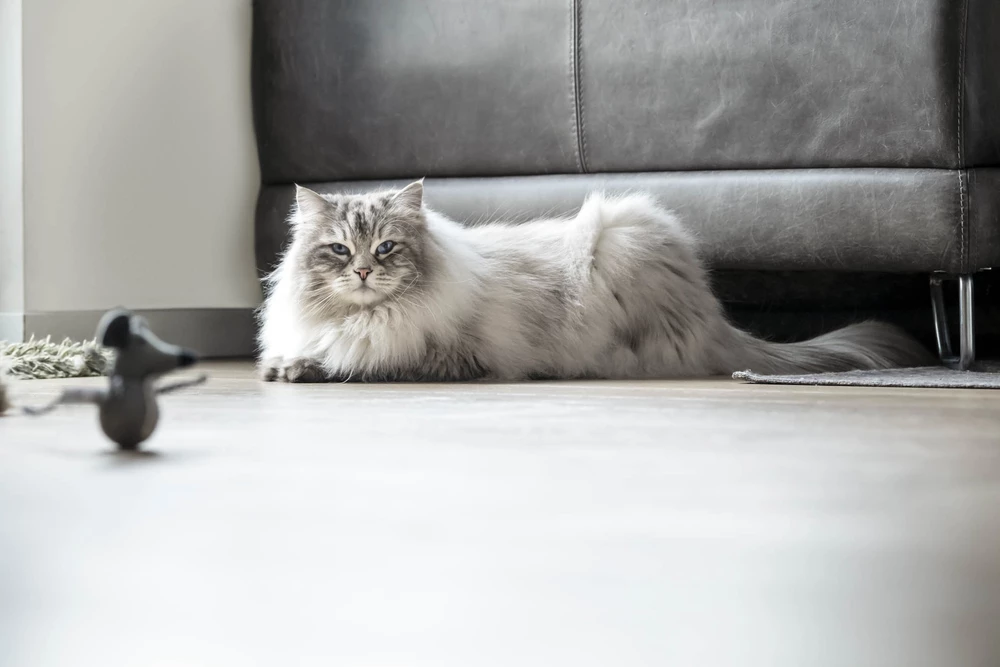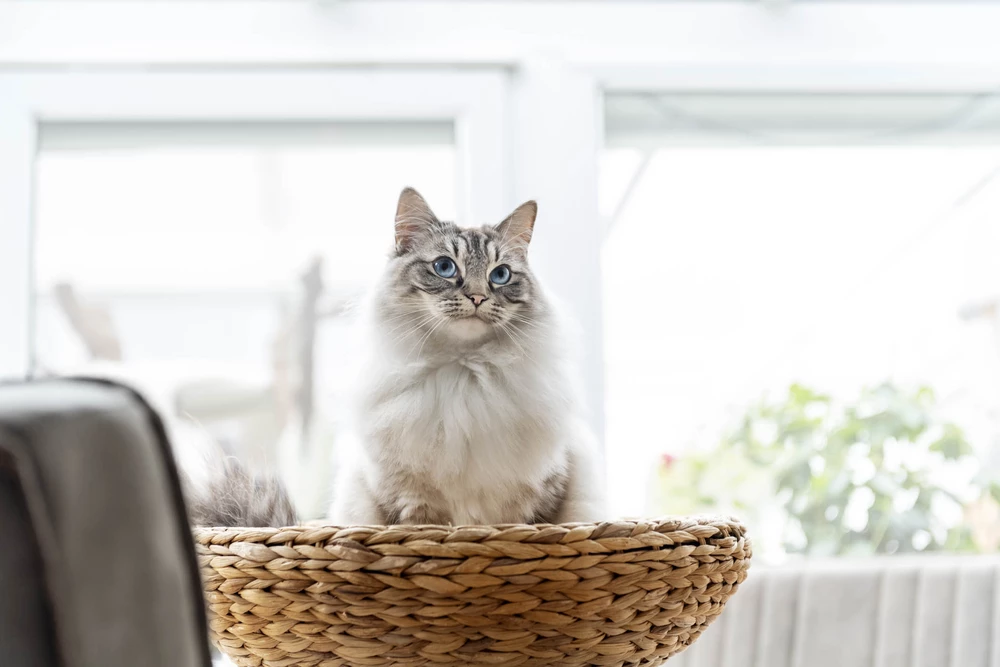
Having your very own kitten is often a dream come true, but how do you house-train a cat? Read on to find out everything you need to know about house-training your cat and what to do if things don’t go according to plan…
Cats are clean animals. This is not only evident in the way that they painstakingly groom themselves, but also in the fact that they always like to use the same place for their toilet habits. You can take advantage of this to house-train your cat.
CLEAN UP ACCIDENTS THE RIGHT WAY
Most kittens learn what it means to be house-trained by observing their mother, but new surroundings or excitement/agitation can sometimes make them forget what they’ve learned. If you come across a urine puddle or some cat poo far away from the litter box, don’t fret. Your cat is not trying to annoy you, it just needs a bit more help to become toilet-trained. An important step for this is to clean up any accidents thoroughly, as cats are creatures of habit with a keen sense of smell. If an area smells like a toilet they will gladly use it as such again.
It’s therefore extremely important to clean up any accidents very carefully using the right cleaning agent. Nature’s Miracle® specialises in this. The bio-enzymatic formula contained in this product breaks down odour components and removes unsightly stains.
Simply wipe the affected area clean with (paper) towels then spray it with Nature’s Miracle® Stain & Odour Remover. Play with your kitten for 15 minutes then dab the residue with (paper) towels and Bob’s your uncle. Neither you nor your pet will recognise this area as a toilet again. The good news is that this also works for accidents that you discover long after they occurred.
“GOOD KITTY!”
To prevent accidents from happening again, keep an eye on your cat and put it on the litter box when it becomes unsettled, just in case. If your cat knows what to do straight away then give it plenty of praise. That way, you clearly show it what you expect from it. Most cats memorise this really fast. But there are other factors to bear in mind when using a litter box so that it’s even easier to house-train your kitten.
THE RIGHT LOCATION FOR THE LITTER BOX
Most people have something in common with cats, i.e. they don’t like being disturbed while on the toilet. With this in mind, find a good place for your cat’s litter box, i.e. a quiet corner that people don’t walk through and that your cat can easily access. It’s also important to keep any doors leading to this area open, as a general rule. What’s more, you should avoid placing your cat’s litter box near its feeding or sleeping places, as cats don’t like that. For small kittens, it’s worth making sure that the sides of the litter box aren’t too high for them to get into it easily.
MORE THAN ONE LITTER BOX
As a rule of thumb, you should have one litter box per cat, plus one extra. If you have several floors in your home, it makes good sense to put one litter box on each floor as young cats in particular often need to relieve themselves quickly. Over time, you can reduce the number of litter boxes, but at the beginning they certainly help to avoid many an accident. At any rate, if you have more than one cat, each one should have its own toilet.
HOUSE-TRAINED WITH THE RIGHT LITTER
You should fill your litter box with enough litter so that your cat can easily bury his waste. A wide range of litter is available in retail stores. For small kittens, for example, you can find particularly absorbent litter that doesn’t form clumps. Scratchable litter and the toilet-like odour encourage cats to follow their natural instincts. However, certain rules need to be followed. For example, many cats don’t like it when their litter type is changed. They tend to prefer the product that they have known since they were young. As such, if an older cat moves into your home, it’s best to ask its previous owner which litter they used. Otherwise, simply try out which litter suits you and your kitten the best. If your cat likes using its litter box, it’s easier to get it house-trained.
CLEANING THE LITTER BOX CORRECTLY
A cat needs to go to the toilet between two and seven times a day. Once for a bowel movement and the rest of the time to urinate. This adds up to quite a lot of waste. As such, you need to clean the litter box on a regular basis. You should remove any soiled litter at least once, or even better, twice a day. And you should clean the whole litter box thoroughly once a week, preferably with hot water. Not only will your nose thank you for this, but you’ll also make it easier for your cat to become house-trained because cats don’t like using dirty litter boxes.
REFUSE ALTERNATIVES
Young cats are particularly keen explorers. As such, many felines ‘discover’ that relieving themselves in large flower pots is just as pleasant as in their litter box. After all, house plants contain plenty of nice soil to scratch. If this happens, take action from the start by discouraging your cat from urinating and scratching in any soil patches.
HOUSE-TRAINED WITHOUT FORCE
Most cats are quick to house-train, but if that’s not the case for you be patient with your pet. Make sure, with the help of your vet, that he doesn’t have a medical problem. Experiment with different types of litter and try out different litter box locations and quantities. What you must avoid doing at all costs is putting your cat’s nose in fresh puddles of urine or punishing your pet in any other way. That won’t make your cat house-trained any faster. On the contrary, you will clearly undermine your relationship.
If you happen to catch your cat relieving himself somewhere that’s not authorised, say “No!” loudly, pick it up and put it in its litter box straight away. Have patience: your cat will become house-trained one day!
Has your cat started urinating around the home even though he was once house-trained? You can find out the possible cause for this in the following article: ‘HOW TO STOP YOUR CAT FROM SCENT MARKING’.
Sources:
HTTPS://WWW.TIERKLINIK.DE/RATGEBER/FUER-KATZENBESITZER/UNSAUBERKEIT-BEI-KATZEN
Dr. Mircea Pfleiderer, Birgit Rödder: Was Katzen wirklich wollen, GU Verlag 2014
Dr. med. vet. Renate Jones: Unsauberkeit bei Katzen verstehen, vorbeugen, helfen, Kosmos Verlag 2016


